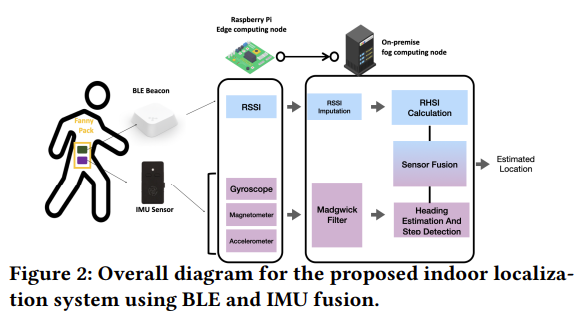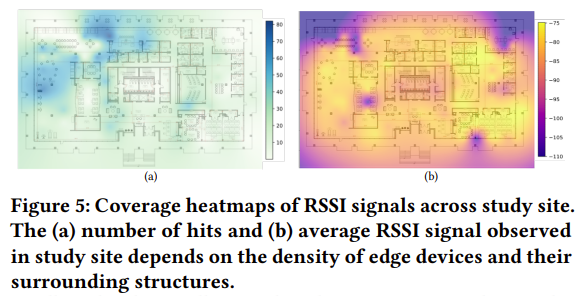There’s new research from the USA on Indoor Localization using Bluetooth and Inertial Motion Sensors in Distributed Edge and Cloud Computing Environment (PDF). The paper describes a low-cost, scalable, edge computing system for tracking indoor movements in a large indoor facility. The system uses Bluetooth Low Energy (BLE) and Inertial Measurement Unit sensors (IMU) and is designed to facilitate therapeutic activities for individuals with Mild Cognitive Impairment.

The implementation involved instrumenting a facility with 39 edge computing systems and an on-premise fog server. Subjects carried BLE beacon and IMU sensors on-body. The researchers developed an adaptive trilateration approach that considered the temporal density of hits from the BLE beacon to surrounding edge devices to handle inconsistent coverage of edge devices in large spaces with varying signal strength. They also integrated IMU-based tracking methods using a dead-reckoning technique to improve the system’s accuracy.

The conclusions of the study showed that the proposed system could robustly localise the position of multiple people with an average error of 4 meters across the entire study space, also showing 87% accuracy for room-level localisations. The integration of IMU-based dead-reckoning with Bluetooth-based localisation further enhanced the system’s accuracy.